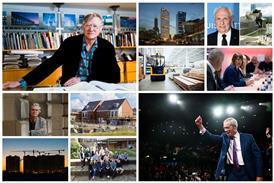Architects possess unique skills that can help charities unlock social and commercial value through innovative design, strategic planning, and effective use of resources, writes Jonathan Mitchell

As a profession, architects possess a unique set of skills to unlock commercial and social benefit. A couple of recent project successes for charity clients got us thinking about the toolkit architects have, and how we can best harness it to support organisations outside the traditional development sector.
What many charitable and community organisations struggle with where to start. What’s the overall vision? Where are the opportunities? What assets are worth spending money on?
Where there isn’t a firm brief, our skills as active listeners come in. Architects are experts in asking the right questions to understand the fundamental needs and values of an organisation and its stakeholders.
Success could be updating and reconfiguring buildings for energy saving and reduced operating costs, flexibility to generate new income streams or redevelopment opportunities to maximise asset value.
For the Walcot Foundation, a charity that works to break cycles of financial deprivation in Lambeth, we assessed an awkward, underused and land-locked site within their estate which had no obvious value. We went on to gain unanimous consent last month for a new infill development of nine homes, the income from which will be used to extend the Foundation’s grants and opportunities for people in the borough. The process took over three years, but the reward of knowing how this will benefit local people is worth every hurdle we faced along the way.
Key to this success was supporting our client through an increasingly complex planning system and reviewing options for releasing the value at different stages of development. Architects’ access to a network of experts brings significant benefits to charity and community organisations - agents to advise on local demand, planning consultants to understand area-specific policy and preference, heritage consultants to provide guidance.

Our profession’s natural curiosity and strong lateral thinking skills allows us to think big and push the boundaries of existing typologies and help clients see opportunities through design. A recent example is our Blackfriars almshouses development for Southwark Charities, providing a safe and supported environment for older Londoners to live independently.
Following briefing sessions with the client and current residents, we evolved the traditional almshouse typology of low-level building around a courtyard to offer an innovative vertical solution. A carefully planned series of stacked spaces promote neighbourliness whilst respecting privacy, meaning that 62 residences and multiple common areas could be created over 15 stories – more than doubling the number of units from the original single storey provision.
Another scenario where our networks can unlock value is where a charity owns a piece of land too large for them to develop alone. Architects working in the commercial sector have the opportunity to link development partners together to create a complementary mix of uses for commercial and social benefit. This was the case for Southwark Charities who needed a profitable combination of uses to enable their plans to provide almshouses. Our consented designs create 62 residences for older people along with 22,500sqm of flexible commercial workspace.
Finally, buildability and affordability are key drivers for charity clients with limited funds for development. Our expertise in materials, methods of construction and sustainability are essential to the viability of their proposals. Good value for a charity client – who usually own and run the buildings long term - is a robust design that stands the test of time whilst remaining flexible for future adaptation.
Using our skills as architects to bring broader social benefit is hugely rewarding. We’ve always relished finding intelligent routes through the complexities of development and planning, and collaboration is always key. But the real difference is caring – caring about an organisation’s mission and the impact it will have on people, caring about getting the brief right to align with fundamental aims and caring about the budget because what we create together will really make a difference.
Postscript
Jonathan Mitchell is director at Fathom Architects
















No comments yet